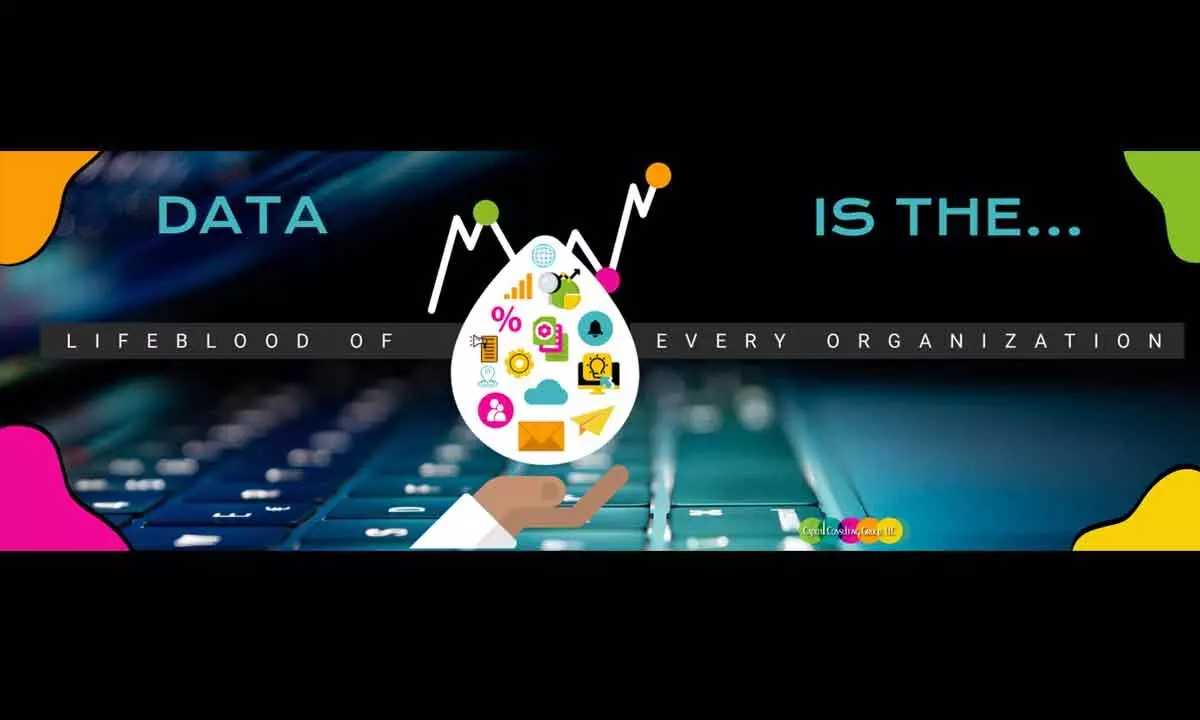Data is the latent lifeblood of the 21st century business
AI bots can both complete the loop and harvest it
image for illustrative purpose

Retailers want to use AI to get in on the action. In fact, on the heels of its AI drive-thru data bonanza, Wendy's recently had to hose down reports it was considering Uber-style “dynamic pricing”
You might have seen viral videos of Wendy's drive-thru customers in the United States ordering their fast food from the firm's generative AI bot Wendy's FreshAI. Most show a very human-like transaction punctuated with cries of amazement at how fast, accurate and polite the system is. While the system and others like it are in their infancy, and some still rely heavily on human assistance, retailers are investing huge sums in AI to replace human workers. Why the rush to automate? It might seem like it's all about slashing the wage bill, and straight AI-for-human swaps are indeed happening in many roles. But there is another force driving the tsunami of restructuring in retail. At stake is the hidden lifeblood of the 21st-century business: data.
Superhuman data harvesters: Retail employees don't typically feed much data back into a business. Instead data flow shapes them personally, and they develop what we recognise as experience or expertise. This is one of the reasons businesses traditionally try to retain employees for long periods. Retail AI bots, on the other hand, completely automate data collection. The bot is part of a business's broader computer system, so the details of every customer interaction can be piped straight to a database. The data harvest can include the complete “stimulus” presented to each customer: the initial greeting, the volume, the tone, the pacing, responses to customer questions, and of course the dollar and cents outcome. Depending on a firm's ethical position, an AI bot can also be designed to harvest not only the customer's words but also various “meta-facts”: male or female, young or old, thin or obese, short or tall, tattoos or no tattoos. In fact, with video and audio recording so commonplace, there is no reason everything about an interaction can't be captured for later breakdown and analysis by AI. By substituting bots for humans, all the data that once ended up in employees (who, possessing the data as expertise, might demand more money to stay) can now go straight into the electronic vaults of the business. What makes the business case for AI bots even more compelling, however, is that they can complete the loop and use the data as well as harvest it. Dynamic “touchpoint” creators: Retailers pay a lot of attention to “touchpoints” – critical moments of contact where they can influence the customer's perceptions and decisions. In the past, human employees have been selected or trained to provide effective touchpoints. For example, teenagers in colourful uniforms staffing a fast food restaurant lend a certain image and vibe. And the scripts and prompts they deliver, such as “Do you want fries with that?”, come straight from a manual. But human employees aren't really able to model millions of past customer interactions, or weigh them against the customer standing in front of them. Retail bots can.
They can complete real-time “data loops”. What does that mean? Using gigabyes of past data, retail bots can profile the current customer and adjust their behaviour accordingly, interact with the customer, and then give a feedback of the data created for better performance next time. And that next time might be two seconds later at an identical outlet on the other side of the country with a similar customer. Businesses are striving to become equations, which AI can solve.
All these data loops are being closed at the cost of human jobs because full digitisation is today's business ideal. Why? Because a business that runs on data flowing in smooth loops is essentially an equation. And if a business is an equation, you can use (you guessed it) the latest AI to constantly tweak your retail bots and pull other levers to maximise the bottom line.
The answers AI provides to the essential question “How do we make more money?” can be extremely granular. For example, based on data from retail bots, AI might one day suggest (and test and implement) an additional 300 millisecond pause before asking overweight customers with brown eyes, “Anything else?” And it might increase profits for reasons nobody understands. This leaves customers in a weird place.
Data loops create a business so agile that customers feel like their minds are not just being read but anticipated. Think that's far-fetched? You are probably already familiar with how well this works from long hours glued to algorithmic pioneers and full-equation businesses like Google, YouTube, Amazon, Facebook and TikTok. Retailers want to use AI to get in on the action. In fact, on the heels of its AI drive-thru data bonanza, Wendy's recently had to hose down reports it was considering Uber-style “dynamic pricing”. So which retail jobs will AI take first? There's no simple answer to this complicated question. But I can offer a guiding principle. AI thrives on data. If your job involves a lot of data, and the data is currently not captured (people dealing with high-volume traffic, like drive-thru workers), or it doesn't inform the way you deliver your service (drive-thru workers again, but also those dealing with complex products) – watch out. You are blocking a data loop, and you may be in the crosshairs. If, on the other hand, you're not a sinkhole for too much data, and a lot of data wouldn't make a big difference to you as a touch point, you're probably safe for a while.
You can relax and just wait to become a victim of the regular wage-saving type of AI restructuring.
(The writer is associated with Queensland University of Technology)

